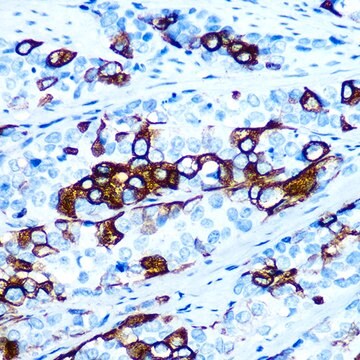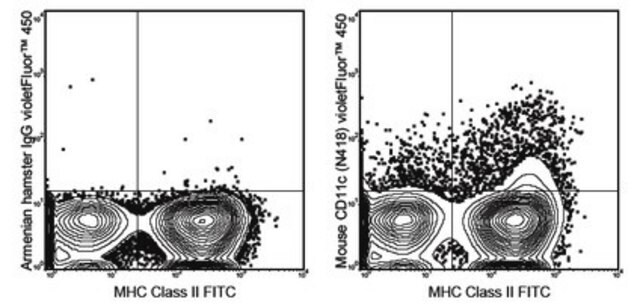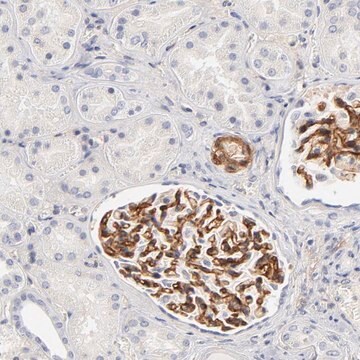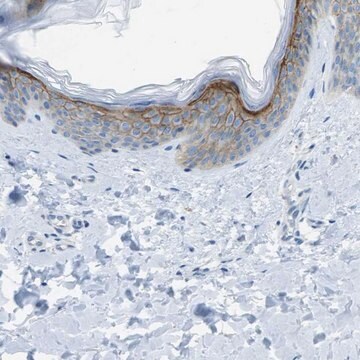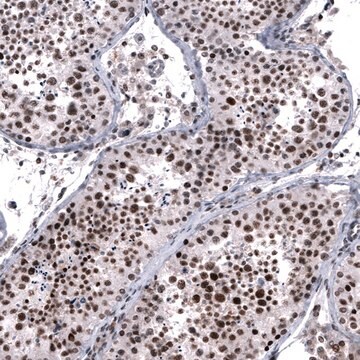MABF523
Przeciwciało anty-CD11c (ludzkie), PE-Cy7, klon 3.9
clone 3.9, from mouse
Synonim(y):
Integrin alpha-X, CD11 antigen-like family member C, Leu M5, Leukocyte adhesion glycoprotein p150, 95 alpha chain, Leukocyte adhesion receptor p150, 95, CD antigen CD11c
About This Item
Polecane produkty
pochodzenie biologiczne
mouse
Poziom jakości
białko sprzężone
PE-Cy7
forma przeciwciała
purified antibody
rodzaj przeciwciała
primary antibodies
klon
3.9, monoclonal
reaktywność gatunkowa
human
opakowanie
pkg of 5 μL (1 μg/test)
metody
flow cytometry: suitable
immunofluorescence: suitable
immunoprecipitation (IP): suitable
izotyp
IgG1κ
numer dostępu UniProt
Warunki transportu
wet ice
docelowa modyfikacja potranslacyjna
unmodified
informacje o genach
human ... ITGAX(3687)
Powiązane kategorie
Opis ogólny
Immunogen
Zastosowanie
Inflammation & Immunology
Jakość
Flow Cytometry Analysis: 1 µg of this antibody detected CD11c in one million human peripheral blood monocytes.
Postać fizyczna
Przechowywanie i stabilność
Oświadczenie o zrzeczeniu się odpowiedzialności
Nie możesz znaleźć właściwego produktu?
Wypróbuj nasz Narzędzie selektora produktów.
Kod klasy składowania
12 - Non Combustible Liquids
Klasa zagrożenia wodnego (WGK)
nwg
Temperatura zapłonu (°F)
Not applicable
Temperatura zapłonu (°C)
Not applicable
Certyfikaty analizy (CoA)
Poszukaj Certyfikaty analizy (CoA), wpisując numer partii/serii produktów. Numery serii i partii można znaleźć na etykiecie produktu po słowach „seria” lub „partia”.
Masz już ten produkt?
Dokumenty związane z niedawno zakupionymi produktami zostały zamieszczone w Bibliotece dokumentów.
Nasz zespół naukowców ma doświadczenie we wszystkich obszarach badań, w tym w naukach przyrodniczych, materiałoznawstwie, syntezie chemicznej, chromatografii, analityce i wielu innych dziedzinach.
Skontaktuj się z zespołem ds. pomocy technicznej
